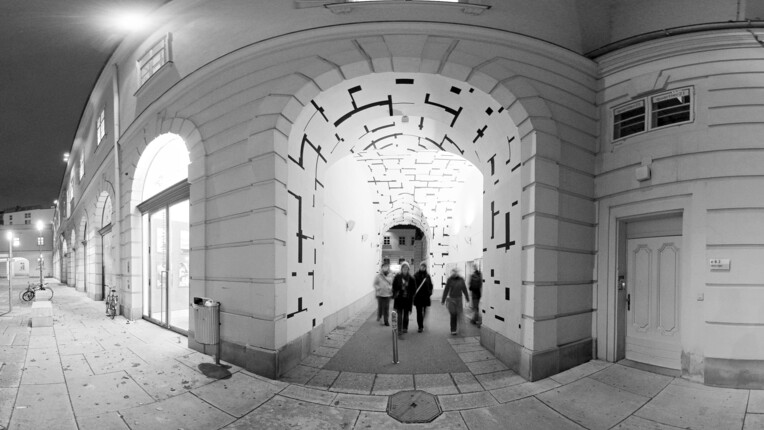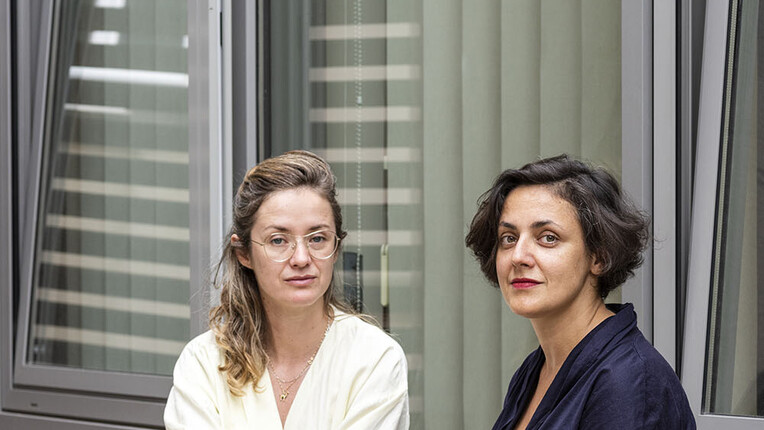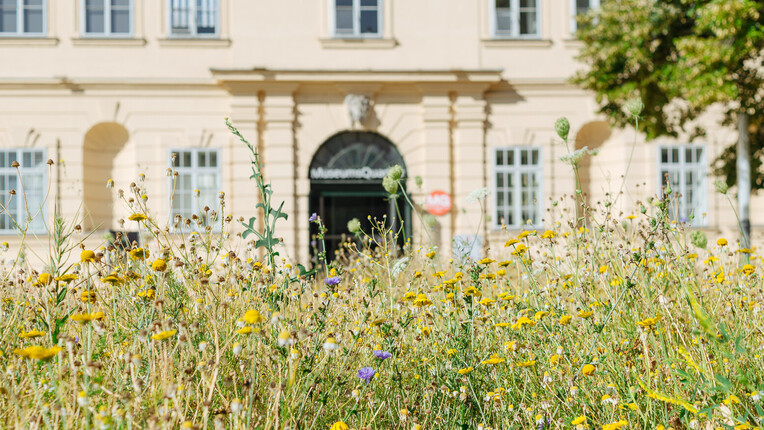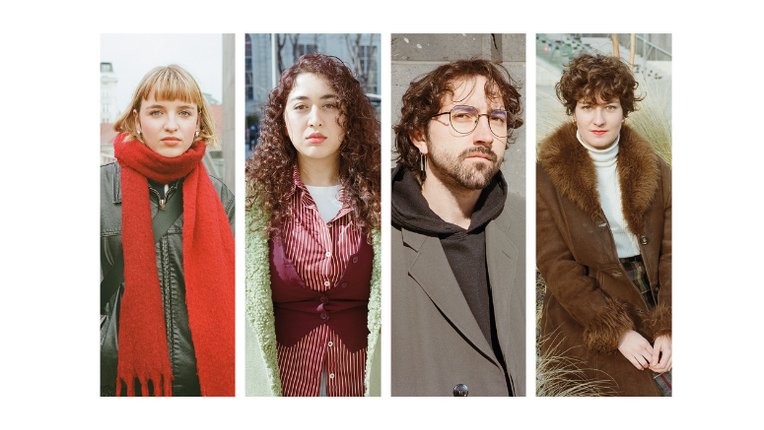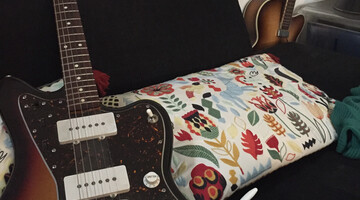
Christian Fennesz in E-Mail Conversation with Keith Rowe in Spring 2019
Commissioned by TONSPUR Kunstverein Wien
I first encountered Christian Fennesz within the context of MIMEO, a twelve piece electro acoustic music ensemble; twelve musicians each of whom could perform a ‘full on’ two hour solo, at the drop of a hat. It was within this swirling vortex we find Christian Fennesz’ calm elegance. I recall an early conversation with Christian regarding Joseph Haydn’s period in Eisenstadt – one might think two musicians discussing Haydn unremarkable, but in the world of late nineteen seventies electro acoustic music it was rare. At this point I came to consider Fennesz as unusual.
I often feel that you get to know the person best when on tour, locked in close proximity for weeks on end, faced with the trials and tribulations of daily life, endless waiting at airports, delayed and cancelled flights, hotel mix ups, promoter miscommunications, along with challenging conditions for making music. Here we find Christian Fennesz the gentleman, always considerate, flexible, helpful and polite.
I have a vivid memory of a happy and excited Christian when we find a Vega Sicilia Unico wine, at Arzak restaurant in San Sebastian – he has an exquisite palate.
In the music we find the man, one has only to scroll down through the various texts to see how people have responded to Christian’s recordings over the years to get a feeling of how his music gains its significance …
“classical pieces -- sweeping and symphonic and patiently unfolding
dense, complex and immersive sound……his clouds of distortion with
radiant chunks of melody…….and the rain, she is beautiful……an aural
kaleidoscope……a buzzing electrified fence of sound…….musical warmth, glowing melodies and lush arrangement….…subjects them to sharp digital decay, providing another deep layer of meaning…….compared to the act of viewing from a distance a series of Monet’s weather and light studies (the Haystacks, the Poplars or Rouen Cathedral)…….causing the music to float like a mirage…….it moves from anticipatory to blissful….…thick with luscious texture and assembled with a symphonic sweep……building from barely audible scrapes and clicks to epic climaxes large enough to blot out the sun…….,”
Here follows a brief conversation, leading up to the Fennesz TONSPUR installation in the Museum Quarter Vienna. This gentle conversation touches on the relationship between Fennesz’s latest CD “Agora”, and the installation.
Keith Rowe: I’ve lived with Agora, ... NO! ... better still maybe that should be I’ve been swimming, immersed, in the lake Agora, for a few days now.
What struck me almost immediately (within 5 seconds) was Gustav Mahler, in particular the unfinished 10th Symphony, and the Adagietto from the 5th.
I’m not sure what the question here is, Mahler ? ... was he swimming in the lake too?
Christian Fennesz: My lake was lake Neusiedlersee. A dark and muddy lake close to the Hungarian border. I grew up there. The water is so dark, you can´t see the ground even if it is barely 2 meters deep.
Gustav Mahler used to visit lake Attersee in summer. A beautiful mountain lake. I swam there!
Mahler also used to go to Semmering in summer. I just found out recently. I go there every summer. It’s the nearest mountain area outside of Vienna, just an hour away.
KR: That image of a dark muddy lake, (lake Neusiedlersee). I can imagine floating, with my head just about the lake surface, looking into the distance, nothing close by, that sense of distance something that the English painter Turner touched upon in his Royal Academy teaching material. From the early 1800’s, he referred to a sense of atmospheric perspective that I find very present in your work, and your latest release Agora would be for me an outstanding example of what Turner was pointing to: Atmospheric Perspective.
CF: Yes Turner is a good example. I look at his paintings at least once in a week. The atmospheric perspective of course, but also that technique of “hiding” reality? A curtain, blurred reality.
Another artist that comes to my mind is Eric Fischl. These scenes, almost like stills from movies, always hiding something. There is always something untold and mysterious.
And the films of Chris Marker, all about memory and ethnology. (Michel Leiris…?) Difficult people from another time with all their faults but still striking.
Marker used to live only 100m away from the flat I had in Paris until 2010. I only found out after he died.
In his late years he never left his flat. He was online on “second life” all the time. He had an avatar there, a tall muscular blond man with long hair. I heard he was only accepting to do interviews on second life.
KR: I find what you refer to as “hiding” reality, very interesting. For me this relates to the concept of the Room – the question for me some while ago was “What constitutes a Room?” Back in 2007, I developed a thought, that being in a room, any room, would potentially contain everything we could possibly know, the task was to develop techniques and approaches that allowed us to tap into what was there. Later this idea developed in to “The Room Extended” which observed that every thing we perceive happens inside our skull, which lead me to see that the skull becomes the room itself.
Then I read that the first track of your release Agora, was titled “In my room” – this fascinated me, and, informed by an interview where you comment on how you worked only with headphones for this recording, I conjured up this image of you sitting in a room. And between the left and right headphones, you construct this swirling landscape, where you reveal and hide – wonderful!
CF: I totally agree with you on your thoughts about “In my room”. It was like that. The whole production was an isolationist experience. I have enjoyed that. My flat, the cave, became a whole universe. I did not feel the need to leave it. I was happy to just walk around in the 3 rooms we have, looking at all the details, all the stuff that Mira brought and that was enough for me. Curtains down, no sunlight. Just cosy and warm darkness. I’ve lived like that for many months, maybe even 2 years. No social life … my daughter’s former bedroom was the studio (it still is). I used whatever was at hand: a guitar, a pedal, a keyboard, just what was next to me. In a way the whole space became an instrument. I’ve been in this “half dreaming state” for a long time. It was an enormous experience. So gladly we have to go out and fly somewhere sometimes! haha!
KR: Further listening to Agora, it seems to me what we share is the use of the guitar primarily as a sound source, and further to that I’m probably a Baroque, Basso Continuo, an Orchestral player, whereas I see you much more as producing Symphonic constructs, an Orchestral player. I began to wonder how you go around to make these constructs, I doubt that you proceed along the classical line of 1st subject – 2nd subject – codetta – back to the 1st subject – recapitulation of the 2nd subject etc. etc. (although I could be entirely mistaken!) how do you work?
I don’t have a way of working, after an initial idea, I trip over myself, stumble into solutions, get stuck, it’s a sad and messy affair.
CF: Yes the guitar is basically a sound source. Even if I play more “traditionally” which I occasionally do, I play very simply and concentrate on the sound. Probably still influenced by old Jim Hall and Wes Montgomery records, or Talk Talk’s last album “The Laughing Stock”.
Over the years I have developed a “network” of sound sources consisting of guitar, laptops, pedals, mixer, that have become one big instrument.
I do have an interest in symphonic sounds, but no, it wasn’t intentional on Agora.
I don’t think my working routine differs so much from yours. I’d sit down and start to improvise, using the gear I described above and record everything into my main studio computer. I collect material. Then I start the mix which is actually the real compositional process. This process can lead me anywhere, as the mixing includes a lot of processing, overdubs etc. It’s a sad and messy affair as well! But it is exciting.
I was very impressed to see how David Sylvian works. He clearly divides the whole process into: the recording – the material – the mix – the mastering. A very clean approach. Very helpful.
Does this make any sense?
KR: In an earlier mail you mention that you are looking forward to a Rothko exhibition coming to Vienna. I recall around 10 years ago, at the Tate standing back from the paintings, and looking at the people looking at the paintings. It was so quiet, serene, undisturbed, people just looking, as if they were absorbed into the paintings themselves. Rothko used the phrase “A single Mood”, there was no turning a corner and being surprised or shocked by a set of paintings that were seemingly done by a different painter, no, there was a single mood throughout the space. I bring this up because it’s something I sense in your work, navigating through the space, moving from emotion to emotion slowly, sensitively, maintaining a single mood. It’s almost counter-intuitive; so strongly held is the view that to maintain concentration over a period of time we need constant changes of pace, volume, mood, ending up with a music that goes whiz bang wallop.
CF: Rothko is another hero. And also Cy Twombly. Well, there is a single mood. It is probably something between depression and ecstasy. I am not bipolar or something, but I guess I carry this classic west Hungarian, eastern Austrian melancholy in me that at times can quickly change into enthusiasm and ecstatic feelings. Perhaps this also shows in the music, a bit too much I guess …
The album is definitely about a single mood but describing this mood from four different perspectives, hopefully making it “a suite of suggestions”.
In a recent review (the label are sending them to me …) the writer said: “Listening suggests shuffling from screen to screen in some aging arthouse, with a different compelling short film playing in every room.” I like that …
KR: In a few weeks your installation for the Museum Quarter in Vienna will be opened, how is it going? I’m guessing given you live in Vienna you know the TONSPUR passageway where the installation is very well, does that help or hinder?
CF: I know the passageway very well and I like the project. My piece will be called “In my room”. What else … after the album and our conversation …
Spring 2019
